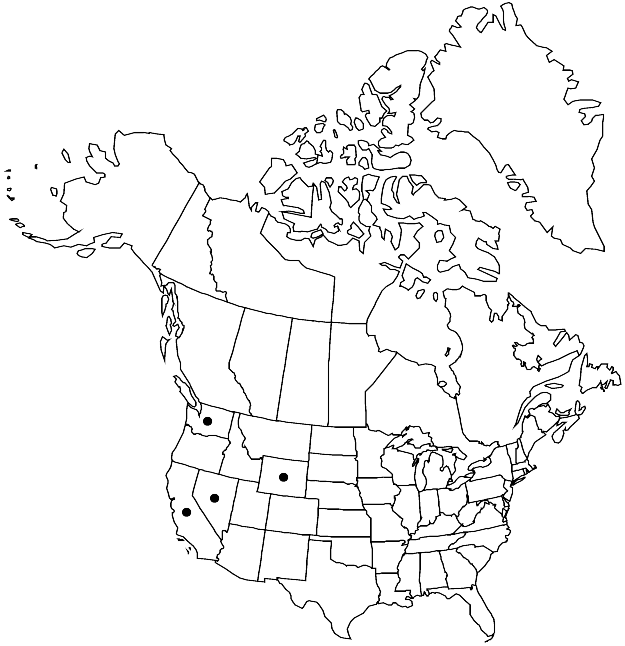Orthotrichum praemorsum
Bot. Centralbl. 44: 418. 1890.
Plants 1–2.5 cm. Stem leaves erect-appressed when dry, ovate-lanceolate to narrowly lanceolate, 2.5–4.5 mm; margins recurved-revolute to near apex, entire; apex gradually acuminate-cuspidate; basal laminal cells elongate-rectangular, walls thick, nodose; distal cells 9–13 µm, 1-stratose, papillae 1–3 per cell, 2-fid, low. Specialized asexual reproduction absent. Sexual condition gonioautoicous. Seta 0.5–1.1 mm. Capsule 1/2 emergent when dry, barely emergent when moist, ovate-oblong when mature, oblong to oblong-cylindric when old, 1.6–2.4 mm, strongly 8-ribbed 1/2 to 2/3 capsule length, constricted below mouth when dry; stomata superficial; peristome double; prostome absent; exostome teeth 8, reflexed-recurved, finely papillose, sometimes papillose-striate proximally, perforate only at apices, not cancellate; endostome segments 8, well developed, usually absent when capsule is old and dry, narrow, of 1 row of cells, coarsely papillose. Calyptra short-conic, smooth, hairy, hairs papillose. Spores 12–18 µm.
Habitat: Rock, lava, dry montane areas
Elevation: moderate elevations
Distribution

Calif., Nev., Wash., Wyo.
Discussion
Of conservation concern.
Orthotrichum praemorsum is rare, known only from a few collections. The species is distinguished by its strongly ribbed, emergent capsules and cuspidate, shortly hyaline-tipped leaves.
Selected References
None.